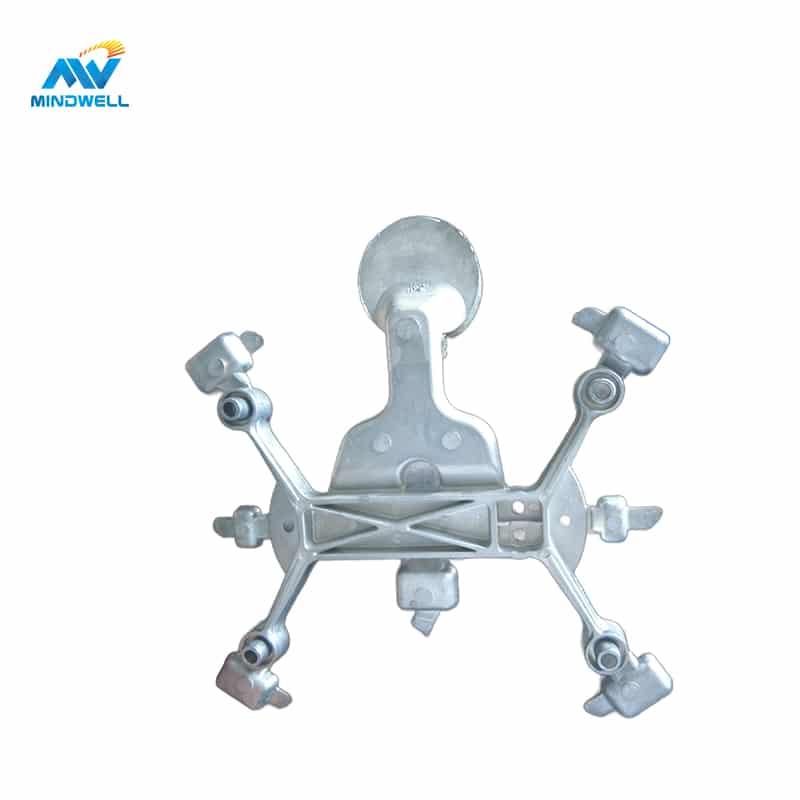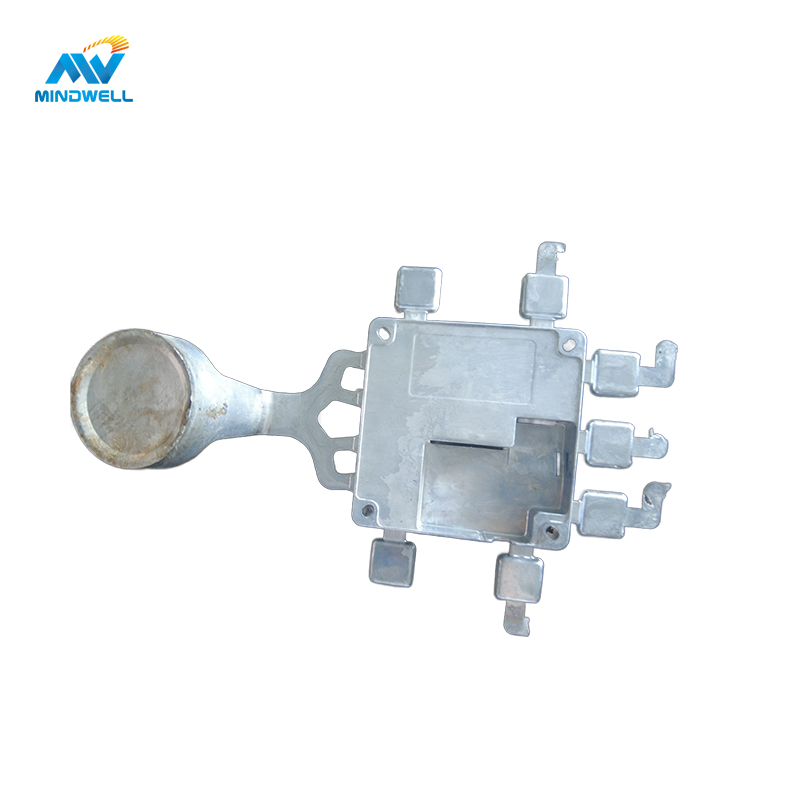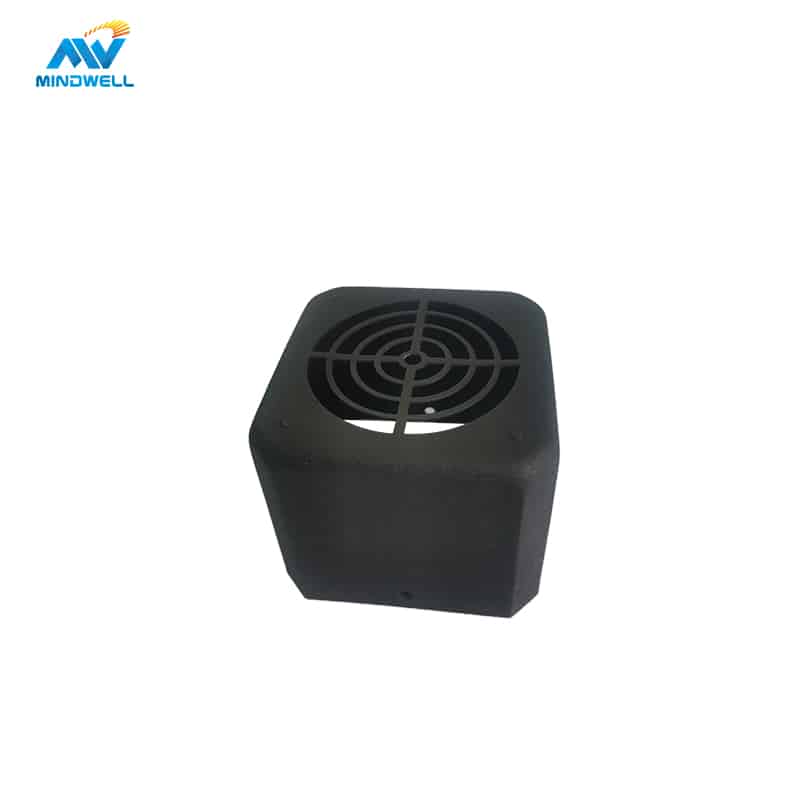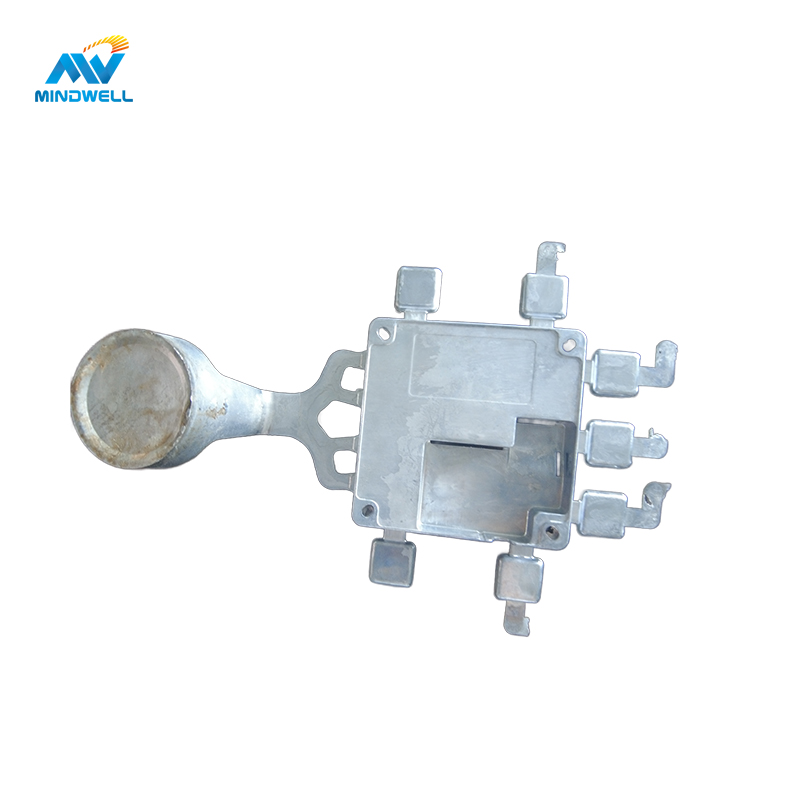In the field of metal manufacturing, constant innovation is shaping the landscape of precision and efficiency. High-pressure aluminum die-casting stands out as a key technology that revolutionizes the production of complex components with unparalleled precision. High-pressure aluminum die casting is a widely adopted manufacturing process capable of producing intricate aluminum parts. In this comprehensive guide, we delve into the intricacies of high-pressure aluminum die casting, exploring its applications, benefits, and the critical role it plays in modern manufacturing.

Understanding High-Pressure Aluminum Die Casting
What is high-pressure aluminum die casting?
High-pressure aluminum die casting is a metal casting process that involves injecting molten aluminum alloy into a mold under high pressure. The mold cavity is formed by the fast solidification of the molten metal. High-pressure aluminum die-casting is a highly productive, sustainable, and high-quality manufacturing technique with a wide range of applications.
High-pressure aluminum die-casting involves a series of processes that primarily include mold design, smelting of aluminum alloy, injection molding, cooling and solidification, and mold opening. The dimensions and form of the product determine the necessary strength and stiffness, as well as the mold’s ability to tolerate high temperatures and pressures. Smelting aluminum alloy involves placing certain aluminum alloy components in a furnace and melting them in accordance with a predetermined ratio. To ensure that the aluminum alloy melts uniformly, a melting temperature of 650 to 750 degrees Celsius is typically maintained for a certain amount of time. With injection molding, the molten aluminum alloy is rapidly poured under high pressure into the die-casting mold’s cavity, and the resulting product is rapidly solidified under pressure.
Products made from high-pressure aluminum die-casting offer exceptional mechanical and physical qualities, including high strength, low weight, and resistance to corrosion. Because of these qualities, high-pressure aluminum die-casting is extensively utilized in a variety of industries, including electronics, automotive, and aerospace. Simultaneously, the high-pressure aluminum die-casting method offers environmental protection and high efficiency benefits, including increased production efficiency, decreased waste and energy consumption, etc.
High-pressure die casting features
High-pressure die casting is a popular option in many different sectors because it can manufacture intricate, multi-layered components with a wide range of attributes. The following are some essential features of high-pressure die casting:
- Improved metal flow and filling under high pressure, precise casting of intricate geometric patterns
- Quick production
- superior quality of surface polish
- high ratio of strength to weight
- Adjust to different alloy material kinds
- Shape and size uniformity Minimize post-processing expenses Cost-effective for big quantities
- Cut down on energy use and material waste
- Reach precise tolerances
- Diminish the porosity
In conclusion, high-pressure die casting is the method of choice for creating a wide range of components across industries because it combines speed, accuracy, and adaptability. The aforementioned attributes underscore the benefits of high-pressure die casting as an advantageous production technique.
high-pressure aluminum die-casting process
- Mold production: Create die-casting molds in accordance with specifications for the product.
- Melting and Pouring: To pour aluminum, melt it to a liquid form while keeping it at a certain temperature.
- Die Casting: Rapid injection of molten aluminum into a mold cavity at high pressure, typically 1500 to 30,000 psi, ensures the alloy fills every intricate detail of the mold. Assemble the casting into the appropriate form.
- Cooling: To make sure the casting is fully crystallized, it is chilled in the mold for a certain amount of time.
- Demolding: Open the mold and take the casting out of the mold.
- Cleaning and trimming: Take out any extra sprues and burrs from the castings.
- Additional treatment: to enhance the mechanical qualities and surface quality, it might include spraying, heat treating, polishing, or other methods.
- Inspection and packaging: packaging of eligible items and quality inspection of castings.
The difference between high-pressure die casting and low-pressure die casting
Process principle:
- High-pressure die casting: Under high pressure, liquid or semi-liquid metal is rapidly poured into the die-casting mold cavity and solidified. Both the filling speed and the injection pressure that are often employed are quicker.
- Low-pressure die casting: Under pressure, the liquid alloy is forced from bottom to top into the casting chamber and solidifies. It is possible to modify the pressure and speed during pouring, making it appropriate for a range of alloys and casting molds.
Charging method:
- High-pressure die casting: A very quick filling time is achieved by rapidly filling the die-casting mold cavity with liquid or semi-liquid metal.
- Low-pressure die casting: the metal liquid is poured smoothly and without splashing, utilizing bottom-injection mold filling.
Application range:
- High-pressure die casting is appropriate for producing castings with excellent quality and accuracy, such as cylinder heads and engine blocks for automobiles.
- Low-pressure die casting is appropriate for casting a variety of alloys and molds, including sand and metal molds.
High-pressure aluminum die-casting Advantages and disadvantages:
- Good molten metal fluidity at high pressure, robust mold filling capabilities, excellent dimensional accuracy of castings, and good surface quality are some of the benefits of high-pressure casting. The short mold life, high equipment cost, and need for high-pressure equipment are the drawbacks.
- Stable casting quality, a broad variety of applications, and process flexibility are some of the benefits of low-pressure casting. Its drawbacks include its comparatively poor production efficiency, the need for many mold opening and closure procedures, and the high skill level of the operating personnel.
In conclusion, it is clear that high-pressure die casting and low-pressure die casting vary in terms of the fundamentals of the processes involved, the techniques used to fill the mold, the range of applications, and the benefits and drawbacks of each. Selecting the right casting technique requires careful thought based on the unique specifications and casting production circumstances.
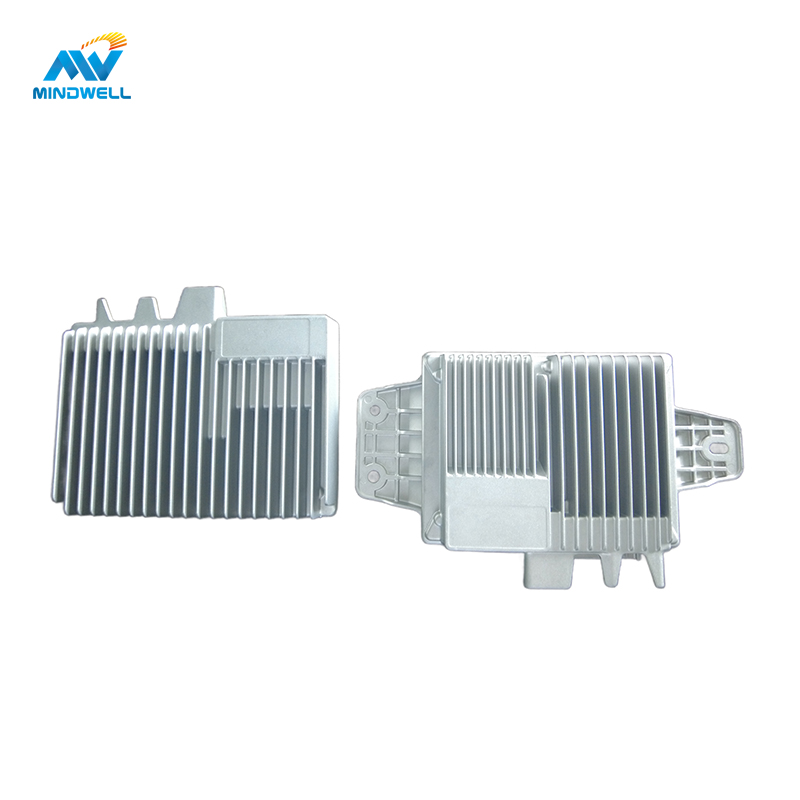
Applications of High-Pressure Aluminum Die Casting
Industri otomotif:
Automotive manufacturers often use high-pressure aluminum die casting for producing engine, transmission, and chassis parts. Aluminum’s great strength and light weight make it possible for automobiles to drastically cut weight without sacrificing mechanical integrity, which boosts fuel economy, lowers emissions, and enhances overall performance.
- Engine and transmission components, such as cylinder blocks, cylinder heads, oil pans, etc., need to withstand high pressures and temperatures while remaining lightweight.
- Components of the chassis include the suspension, steering, brake, and other sections of the system. Aluminum parts contribute to the vehicle’s increased overall stability and stiffness.
- structural components: bumpers, door frames, etc. These components must be very strong and resistant to impact.
Aerospace industry:
aluminum High-pressure die casting is a process used in the aerospace industry to create vital parts for spacecraft and airplanes. Because aluminum is lightweight, it may be used to reduce the weight of airplanes and spacecraft, which improves performance and fuel economy.
- Engine Case: Aluminum engine cases are made to endure pressures and temperatures that are very high.
- Brackets and structural elements: aluminum wings and fuselage structural elements need to be very strong and resistant to corrosion.
Electronics industry:
High-pressure aluminum die casting is mostly utilized in the electronics sector to make heat sinks, housings, and other components. Aluminum is a great material for dispersing heat from electrical equipment because of its good thermal conductivity.
- Heat sink: utilized to effectively dissipate heat from high-heating components like the CPU and GPU, ensuring the steady functioning of electronic equipment.
- Enclosure: Offers structural support and shields electrical equipment from the outside world.
Consumer goods:
Power tools, furniture, and electrical appliances are just a few of the consumer products that are made using high-pressure aluminum die-casting. These items often have to be lightweight, strong, and attractive.
- Electrical appliances include air conditioners, refrigerators, and some of their internal structural components.
- Power tools: the internal structural components and drill and saw casings, for example.
- Furniture: To improve the overall construction and look, several furniture pieces, such as tables and chairs, also use metal components.
Precautions for aluminum high-pressure die-casting:
Mold cost:
High-pressure aluminum die casting requires high-precision and high-quality molds to ensure the consistency and accuracy of castings. Therefore, the initial tooling cost may be relatively high. However, due to the high production efficiency and low scrap rate of high-pressure aluminum die casting, these costs are usually balanced in long-term production. For high-volume production, tooling costs can be amortized, reducing unit cost.
pemilihan bahan:
It is crucial to choose an aluminum alloy material suitable for high-pressure aluminum die casting. Different aluminum alloys have different physical and chemical properties, such as strength, corrosion resistance, thermal conductivity, etc. Choosing the right aluminum alloy can ensure that the performance of the casting meets the requirements while also improving production efficiency. When selecting materials, factors such as the fluidity, shrinkage rate, and mold temperature of the aluminum liquid also need to be considered.
Part design:
During the part design phase, factors such as draft angle, wall thickness, and rib and boss locations need to be considered. Draft angle is a key factor in ensuring smooth ejection of the casting from the mold. Wall thickness and rib location will affect the strength and stiffness of the casting. The position of the boss can help improve the filling effect of aluminum liquid. Working with experienced die-casting engineers to ensure the rationality and optimization of part design can reduce problems during the production process and improve product quality.
Surface treatment:
Although high-pressure aluminum die casting can achieve a relatively high surface finish, some post-processing may sometimes be required to achieve the desired surface quality. This may include treatments such as machining, polishing, or coating. Polishing removes minor surface imperfections and improves the finish. Coatings can provide an additional layer of protection, improving corrosion resistance and aesthetics. Selecting appropriate post-processing methods based on specific needs can further improve the quality and performance of high-pressure aluminum die castings.
Kesimpulan
aluminum High-pressure die casting is a versatile and cost-effective manufacturing process for producing complex and lightweight aluminum parts. Because of its benefits, which include cost-effectiveness, dimensional precision, and design flexibility, it is the preferred option in a number of sectors. High-pressure aluminum die casting will continue to play a crucial role in determining the direction of production as long as industries need complicated components with exceptional strength and performance. Whether in consumer products, automotive, or aerospace, this method keeps pushing the boundaries of what’s possible in the metal production industry.
Frequently Asked Questions (FAQ)
What metals are suitable for high pressure die casting?
Applying high-pressure die casting to a range of metals and alloys is a flexible technique. However, magnesium, zinc, and aluminum are the metals that are most often utilized in high-pressure die casting. These metals are all appropriate for the die casting process because of their distinctive qualities:
Aluminium:
Benefits: High strength-to-weight ratio and lightweight design.
outstanding resistance against corrosion.
a high level of heat conductivity.
increased stability in dimensions.
Applications: Engine and gearbox casings, as well as other automotive components.
electrical and electronic parts.
consumer items (hardware, appliances for the home).
components used in aerospace.
Zinc
Benefits: Extremely ductile.
strong influence.
high precision in dimensions.
outstanding polish on the outside.
Material that is recyclable.
Applications: Finely detailed small parts (gears, locks, connections).
auto components (emblems, ornamental trim).
electrical parts.
plumbing fittings.
Magnesium:
Benefits: Exceptionally light weight.
high ratio of strength to weight.
Excellent heat dissipation.
Outstanding machinability.
Applications: Transmission cases, steering wheels, and other automotive parts.
gadgets (such as computers and cameras).
components used in aerospace.
sports items and hand tools.
Although the main metals used in high-pressure die casting are magnesium, zinc, and aluminum, other alloys could be appropriate for certain uses. These may include brass, copper, and some specialty alloys made for particular performance requirements. The intended use, necessary mechanical qualities, financial concerns, and environmental constraints are only a few of the variables that influence the metal choice.
It’s crucial to remember that metals with low melting points work well for die casting since they can be effectively poured into molds and solidify fast. In order to ensure that the finished components fulfill the required specifications and performance standards, choosing the right metal is an essential part of the die casting design and manufacturing process.
What is the difference between die casting and high pressure die casting?
The primary distinction between die casting and high-pressure die casting, two comparable production techniques, is the amount of pressure used during the casting process. Below is a summary of the main differences:
Die Casting:
- Operating Pressure:In general, die casting entails injecting molten metal under high pressure into a mold; however, the pressure utilized is usually lower than in high-pressure die casting.
- Levels of Pressure:Lower pressure ranges, usually below 10,000 psi (pounds per square inch), are possible for die casting machines to function at.
- Resources:Metals used in die casting might include copper, zinc, magnesium, aluminum, and other metals.
- Uses:Die casting is a versatile process that may be utilized for both small- and large-scale manufacturing.
- Intricacy:Although the pressure levels employed in die casting may not be as high as those in high-pressure die casting, die casting may nevertheless produce intricate forms and detailed components.
High Pressure Die Cast:
- Increased Pressure:As the name implies, high-pressure die casting requires far greater injection pressures than traditional die casting.
- Levels of Pressure:High-pressure die casting machines usually run at pressures between 10,000 and 30,000 pounds per square inch, or even more.
- Quickness and Effectiveness:Higher pressure enables shorter cycle times, faster metal solidification, and faster mold filling. Because of the resulting improvement in efficiency, it may be produced in large quantities.
- Resources:Although certain materials like magnesium, zinc, and aluminum are often linked with high-pressure die casting, a wider variety of alloys that are ideal for high-pressure procedures may be used with it.
- Uses:In sectors like electronics and automobiles where efficiency, accuracy, and high production rates are critical, high-pressure die casting is especially preferred.
In conclusion, the amount of pressure used during the casting process is the main distinction between die casting and high-pressure die casting. Significantly higher pressures are used in high-pressure die casting, which results in quicker production cycles and increased efficiency. Both methods involve pumping molten metal into molds to make intricate shapes; the difference is in the pressure at which this is done.
What is high pressure casting process
A manufacturing method known as “high-pressure casting” involves injecting molten metal under very high pressure into a mold cavity. High accuracy, tight tolerance, and complexly shaped metal components are often produced with this technique. High-pressure die casting and high-pressure squeeze casting are two of the most prominent types of high-pressure casting techniques.
High-Pressure Die Casting:
- Overview of the Process: High-pressure die casting is a technique in which molten metal, usually magnesium, zinc, or aluminum, is injected at high pressure into a steel mold.
- Pressure Levels: In high-pressure die casting, the injection pressures are typically between 10,000 and 30,000 psi (pounds per square inch) or even higher.
- Speed and Efficiency: Shorter cycle times and higher production efficiency are the results of the high pressure, which also makes it possible for the metal to solidify and fill the mold quickly.
- Applications: Widely utilized in the electronics, automotive, and other sectors to produce complex parts like as engine and gearbox casings.
High-Pressure Squeeze Casting:
- Overview of the Process: Die casting and forging are two hybrid processes that are combined in high-pressure squeeze casting. Melted metal is injected into a mold cavity, and further pressure is applied as the metal solidifies.
- Pressure Levels: The extra pressure exerted during solidification may be significant, even if the initial injection pressure is lower than in high-pressure die casting.
- Benefits: The finished casting has a finer grain structure, improved mechanical qualities, and reduced porosity thanks to the squeezing action.
- Applications: Used in the production of parts for high-performance applications and aerospace components, where enhanced mechanical qualities are essential.
Common Features of High-Pressure Casting Processes:
- Mold Design: Accurate molds composed of sturdy materials, such as steel, are necessary for both high-pressure die casting and high-pressure squeeze casting.
- Fast Solidification: The high pressures used in these procedures help the molten metal cool and solidify more quickly, producing finer grain structures and better mechanical qualities.
- complicated forms: These methods work well for producing parts with fine features, thin walls, and complicated forms.
- Resources:Aluminum, zinc, and magnesium are examples of non-ferrous metals that are often cast using high pressure techniques.
All things considered, the efficiency, accuracy, and capacity to manufacture superior metal components with a variety of desired properties are benefits of high-pressure casting procedures. The particular procedure used is determined by the end product’s specifications as well as the required cast metal qualities.


